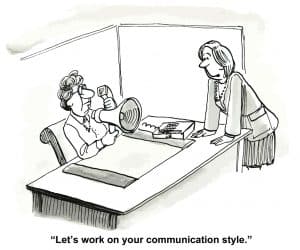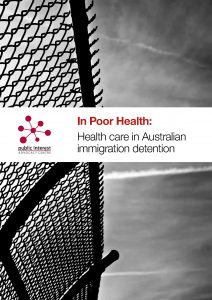 One of the most rewarding sources of occupational health and safety (OHS) information is the literature review undertaken by, usually, university researchers. It is rewarding because someone else has done most of the reading for you and the spread of resources can be massive and/or global. But, there can also be missed opportunities from taking a narrow scope and from excluding some non-peer-reviewed analysis. One of these involves a systematic review of lost-time injuries in the global mining industry.
One of the most rewarding sources of occupational health and safety (OHS) information is the literature review undertaken by, usually, university researchers. It is rewarding because someone else has done most of the reading for you and the spread of resources can be massive and/or global. But, there can also be missed opportunities from taking a narrow scope and from excluding some non-peer-reviewed analysis. One of these involves a systematic review of lost-time injuries in the global mining industry.
Don’t “say anything to anyone..” – Dreamworld inquest
 The first week of the two-week inquest into four fatalities at the Dreamworld theme park in Queensland has concluded. It has substantial occupational health and safety (OHS) management lessons for Australian businesses in a similar way to that of many recent workplace disasters. Those lessons are basic and the hazards are well-known in the OHS profession. Journalists Jamie Walker and Mark Schliebs, in the Weekend Australian newspaper, provided an excellent review (paywalled) of the lessons from that first week.
The first week of the two-week inquest into four fatalities at the Dreamworld theme park in Queensland has concluded. It has substantial occupational health and safety (OHS) management lessons for Australian businesses in a similar way to that of many recent workplace disasters. Those lessons are basic and the hazards are well-known in the OHS profession. Journalists Jamie Walker and Mark Schliebs, in the Weekend Australian newspaper, provided an excellent review (paywalled) of the lessons from that first week.
SafetyAtWorkBlog has not written about the deaths on the, now discontinued, Thunder Rapids ride because there has been an
New inquiry into sexual harassment – an OHS opportunity and challenge
 On June 20 2018, the Australian government announced a National Inquiry into Sexual Harassment in the Workplace, claiming it to be a world-first. Sexual harassment is not an occupational health and safety (OHS) hazard in many ways BUT the psychological harm it can create is. The job of an OHS person is to encourage employers to reduce work-related harm through prevention, so we need to prevent sexual harassment, just as we do for all the work activities that contribute to poor psychological health and safety.
On June 20 2018, the Australian government announced a National Inquiry into Sexual Harassment in the Workplace, claiming it to be a world-first. Sexual harassment is not an occupational health and safety (OHS) hazard in many ways BUT the psychological harm it can create is. The job of an OHS person is to encourage employers to reduce work-related harm through prevention, so we need to prevent sexual harassment, just as we do for all the work activities that contribute to poor psychological health and safety.
The macroeconomic costs of sexual harassment in the workplace may be of interest to politicians and business lobbyists but this can be a significant distraction from identifying ways to prevent psychological harm, which should be the most important legacy of this type of inquiry.
Addressing the OHS impacts of
Old school OHS – eliminating workplace risks at the source
 Safe Work Australia’s work-related psychological health and safety guidance focusses on the elimination risks and hazards, as required under Australia’s workplace health and safety laws. But a slight technical change in the legislation when it moved from occupational health and safety (OHS) to work health and safety (WHS) impedes its successful acceptance.
Safe Work Australia’s work-related psychological health and safety guidance focusses on the elimination risks and hazards, as required under Australia’s workplace health and safety laws. But a slight technical change in the legislation when it moved from occupational health and safety (OHS) to work health and safety (WHS) impedes its successful acceptance.
Australia’s Work Health and Safety laws dropped a reference in the Act’s Objects that would have provided considerable support to work-related mental health and this guidance.
Does a loss of shift due to fatigue = a Lost Time Injury?
 A SafetyAtWorkBlog reader emailed me this question:
A SafetyAtWorkBlog reader emailed me this question:
“does a loss of shift due to fatigue equal a Lost Time Injury?”
My standard response is “why not?”
This type of LTI (Lost Time Injury) issue is one that will become increasingly common as the occupational health and safety (OHS) prominence of wellness and work-related psychological health and safety Continue reading “Does a loss of shift due to fatigue = a Lost Time Injury?”
A strong attack on work-related psychological health and safety
The guidance on workplace psychological health and safety forecast by Safe Work Australia’s Peta Miller was released on June 14 2018. There is potential for this guidance to change how mental health is managed and, most importantly, prevented in Australian workplaces.
 It is important to note that “Work-related psychological health and safety – a systematic approach to meeting your duties” has been developed with the involvement and approval of all of Australia’s occupational health and safety (OHS) or work health and safety (WHS) regulatory bodies. Workplace mental health promoters and resilience peddlers are unlikely to find much support in this document as the prevention of harm is the benchmark.
It is important to note that “Work-related psychological health and safety – a systematic approach to meeting your duties” has been developed with the involvement and approval of all of Australia’s occupational health and safety (OHS) or work health and safety (WHS) regulatory bodies. Workplace mental health promoters and resilience peddlers are unlikely to find much support in this document as the prevention of harm is the benchmark.
The guidance is also intended to operate in support
Duty of Care to the safety and health of “others”.
 The Public Interest Advocacy Centre (PIAC) has released a very good report about Australia’s immigration detention centres which includes a long discussion on duty of care to detainees under Common Law. The report, “In Poor Health: Health care in Australian immigration detention” does not include any discussion on the duty of care under work health and safety (WHS) legislation however it can be argued that the Australian Government, through its supply chain, chain of responsibility and contract management, also has a duty of care to detainees under health and safety laws.
The Public Interest Advocacy Centre (PIAC) has released a very good report about Australia’s immigration detention centres which includes a long discussion on duty of care to detainees under Common Law. The report, “In Poor Health: Health care in Australian immigration detention” does not include any discussion on the duty of care under work health and safety (WHS) legislation however it can be argued that the Australian Government, through its supply chain, chain of responsibility and contract management, also has a duty of care to detainees under health and safety laws.
Several recent legal actions and workplace safety guidance indicates that clarification about the duty of care on physical and psychological risks to “others” is overdue.
